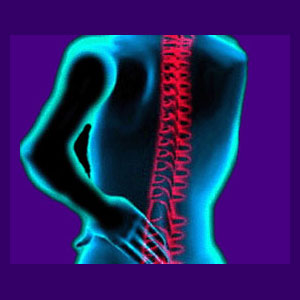
TMS lower back pain is the most prevalent location for tension myoneural syndrome to strike in the human anatomy. According to all clinical reports, it is also the most agonizing and debilitating of all locations. Symptoms in the lumbar and sacral regions are the main complaints of most TMS sufferers, with TMS neck pain coming in second place in terms of symptomatic bodily regions. In many patients with lower back pain, there is also the possibility of experiencing TMS sciatica symptoms or other related psychologically-induced pain syndromes. In fact, lower back pain is often found in combination with one or more other psychogenic disorders. These other expressions can help diagnosticians to focus-in on TMS as a possible causation of pain.
This essay examines why the lower back is such an ideal target for TMS symptoms to take hold. Furthermore, we will investigate why the traditional treatment sector has encouraged the success of TMS lumbar pain through its propagation of antiquated and incorrect philosophies regarding the true nature of low back pain causation.
Why Is TMS Lower Back Pain So Common?
Virtually every patient who eventually turns out to have TMS will have been previously misdiagnosed with one or more structural explanations for their pain. This is almost universal, since few, if any, TMS patients realize that their sufferings are psychosomatic from the get-go. Most patients will instead pursue medical or chiropractic diagnosis and will surely be labeled as injured, degenerated or otherwise structurally-deficient.
Tension myositis syndrome is such a successful condition, since it is so good at hiding its true mindbody nature. It will masquerade as a structural syndrome and continue unchecked despite seemingly appropriate treatment.
This brings us to our first important point regarding why TMS chooses the lower back as its preferred target. Since the lumbar region degenerates the fastest of all spinal areas, and since even the typically innocent aging processes, such as disc desiccation and osteoarthritis, are found in the lumbar spines of virtually all adults, TMS will always have a structural scapegoat to keep its true nature a secret.
The healthcare system has propagated medical myths regarding the existence of a pathological component to most harmless aspects of spinal aging. Since these processes can always be found in the lower back, the TMS gremlin gets right on board with the idea that these normal structural changes will accept the blame for pain that is really caused by the mindbody interactions.
TMS Lower Back Pain Torture
Despite TMS’s source process of ischemia being a harmless and transient anatomical state, it is brutally agonizing in its effects on the body. Oxygen deprivation can cause symptoms anywhere in the anatomy, including the muscles, ligaments, nerves and other tissues. Conveniently, all of these tissue types are fully present in the lower back.
When ischemia is focused in the lumbar region, most patients will endure recurrent bouts of acute pain, including muscular spasms which are utterly debilitating. Most patients will blame these episodes on injury, or some known spinal irregularity, despite the mind being the true culprit the entire time.
As time progresses, many patients settle into a chronic pain pattern, in which their symptoms exist constantly to one degree or another. Daily pain in the low back is normal and many pastimes will exacerbate this torment. A great number of patients also develop sciatica in the chronic phase, even if they did not demonstrate leg symptoms during the acute phase of TMS.
Most victims are conditioned to believe that certain activities or positions help or aggravate their pain, although this is usually nothing more than a programmed psychological pattern. Although many patients accept the TMS diagnosis, some are clueless about how to stop the condition from ruining their lives.
For patients who resist the idea that they are suffering from a mindbody syndrome like TMS lower back pain, the consequences can be dire. Most of these hapless patients endure years of failed back treatments and eventually survive a failed spinal surgery.
A fortunate few of these sad patients find their way to reconsidering the diagnosis of TMS out of pure desperation, since they are thoroughly exasperated with traditional medicine and its complete lack of efficacy for their painful lumbar issues.
TMS Lumbar Back Pain Considerations
The second crucial point to consider in this article is that TMS lower back pain is a condition which thrives on misinformation and misunderstanding. Since the lower back is the center of all problems in the dorsalgia sector, there is no doubt that TMS will maintain its preference for lumbar symptomatic expression for many years to come.
Things will not change until the entire mythology of spinal aging has been widely discussed and accepted into popular culture and this can only happen by a paradigm shift in the way doctors view the body, the way they view pain and most importantly, the way that they make money. Good luck changing that last point, in particular. Traditional treatment of lumbar dorsopathy is one of the most profitable of all medical niches.
It is the very nature of most low back pain patients to seek professional help. The symptoms are simply too brutal to endure alone. This is why there is such as huge industry of care providers and a vast diversity of symptom-focused and curative modalities.
TMS Low Back Pain Guidance
TMS patients have probably seen many doctors, chiropractors and therapists, to no avail, before realizing that they actually have tension myositis syndrome. Now, they seek help from TMS-trained doctors to cure their pain. This can be a great idea, in theory, but caution must be maintained. Many TMS treatment providers use smoke and mirrors tactics to get a patient right back into traditional care, with a small emphasis being placed on the role of the mind, just to keep-up appearances.
In essence, these caregivers are not true TMS doctors. They merely market themselves to treat a full range of health issues, including TMS, because they can make more money by including mindbody work along with their usual routine of traditional therapies.
Our advice to these patients is simple: Try to treat TMS on your own. Break the cycle of dependency on doctors of all kinds.
Most cured TMS patients used self-managed knowledge therapy to overcome their pain without any professional help. Statistically, patients who contact TMS doctors do not get better any faster and many do not get better at all. In fact, many patients still miss the point of treatment entirely: They continue to look for the answers to their problems from some external source, when all along the true answers reside within themselves.





